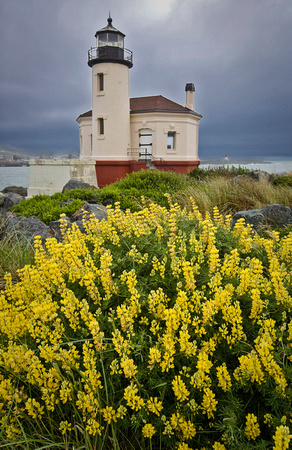Coquille River Lighthouse
The word Coquille comes from the Native American word for the site - Koh-kel. The French explorer LaPerouse sailed past the area in 1796, and the first settlers arrived in 1853. The river seemed a natural location as a port for exporting lumber and other goods from the Coquille River Valley.
However, most vessels bypassed the Coquille River. Shifting sands made the entrance to the Coquille River extremely hazardous to shipping. At times, the river bar was a mere three feet below water. In 1880, work began on a south jetty to bring the channel depth to ten feet. Even with this addition, by 1887 shoals had formed leaving a depth of only five feet.
The improvements did eventually lead to an increase in river traffic. Sawmills and shipyards were built in the town of Bandon on the south side of the river mouth. The increase in traffic created the need for a navigational aid to mark the river. A lighthouse was approved in 1891, but questions of land ownership delayed construction until 1895.
The Coquille River Lighthouse was first lit on February 29, 1896. The station consisted of a 40-foot tower and octagonal fog signal room. The tower housed a fourth-order Fresnel lens. The oil house stood on an adjacent platform. The lighthouse was built on an island and connected to the mainland by a wooden walkway. The keeper's residence was a duplex on the mainland. When the north jetty was completed at the turn of the century, the lighthouse was connected to the mainland.
Despite the two jetties and the lighthouse, shipwrecks still occurred in the area. The schooner C. A. Klose (1904) and Advance (1905) both ran aground on the north jetty adjacent to the lighthouse. Fortunately, both were pulled off the rocks by tugs and surfmen of the nearby lifesaving station. (Gibbs, pp. 53-7) Numerous other vessels were not so fortunate. For example, the schooners Onward, Western Homer, and Del Norte were all lost in 1904-05.


